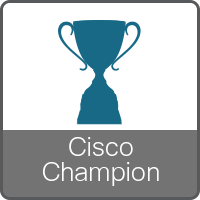I am pleased to announce that Cisco has released its tenth annual Corporate Social Responsibility (CSR) Report. The 2014 Cisco CSR Report outlines our strategy to use our expertise, technology, and partnerships for social, environmental, and business impact.
Each day, people around the world face many challenges: access to quality education, unemployment, poverty, and climate change, to name a few. We’ve learned that when we bring people together, they find innovative solutions to address these problems. And when you add technology to the mix, we can multiply our impact and uncover even greater opportunities.
For example, in France, a team of Cisco Networking Academy students used the connections between people, process, data, and things to create a networked walking stick for the blind. Watch this video to learn more:
Our CSR Report contains many more examples like this, organized according to five pillars:
- Governance and Ethics: Promoting responsible business practices at every level—with employees, suppliers, distributors, and partners
- Supply Chain: Working closely with our 600 global suppliers to maintain our high standards for ethics, labor rights, health, safety, and the environment
- Our People: Attracting, retaining, and developing talented people through an inspiring workplace, engaged management, and flexibility
- Society: Combining technology and human creativity to solve social issues and help communities thrive.
- Environment: Creating new business value for our customers using sustainable Cisco technologies, products, and solutions
Here are just a few highlights from our 2014 CSR Report:
- We updated our Human Rights Roadmap to align with the United Nations (UN) Guiding Principles on Business and Human Rights, and we launched an online human rights training program for our employees.
- 58% of our key suppliers set goals to cut their greenhouse gas emissions — up from 45% in 2013.
- We ranked number 55 on the Fortune “100 Best Companies to Work For” list.
- We made $275 million in cash and in-kind contributions to community organizations worldwide; and our employees volunteered 136,000 hours to support organizations in their own communities.
- Employee-led “Pack It Green” projects saved approximately 888 metric tonne of packaging material and are expected to save over $6 million annually through material and freight cost reductions.
- 97% of Networking Academy students who participate in a selective internship program with local IT companies in Italy get jobs; the partnership is creating a pipeline of tech talent while combatting a youth unemployment rate over 40%.
Continue reading “Cisco Releases Tenth Annual CSR Report”
 By Andrew Mackay, Head of Mobile Solutions, APAC
By Andrew Mackay, Head of Mobile Solutions, APAC #CiscoChampion Radio is a podcast series by
#CiscoChampion Radio is a podcast series by 


CONNECT WITH US